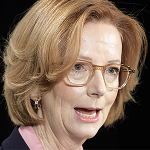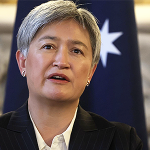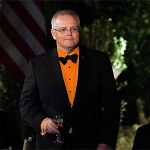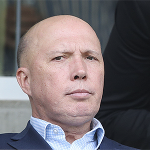From Shanghai (perhaps for the last time): I’ve just finished my last teaching gig as a full-time academic. It is a time of intense emotion and reflection. My students here are magnificent. After twenty years of teaching in China, I have learned to navigate technology that has enabled me to overcome all sorts of language, cultural, economic, financial, communications, transport, and food barriers. Technology has even helped me become friends with people I cannot speak to without the translation app on my mobile phone. A key lesson I’ve learnt is that you cannot pick winners – there is no one technology or app that you can rely upon forever. Things change and often quickly. As I return to Australia and begin a new phase of life, my electricity bill will be increasing by 34 per cent. My career as a political scientist has focused on networked infrastructure policy in the telecommunications, transport, and energy sectors. A key Australian policy habit is that the government tries to control new technologies rather than letting the market do its job. Below I draw on my research from the last 20 years and my work published in this masthead since 2022 to arrive at the conclusion that we are screwed. Drawing on my theoretical contributions to political science, only a critical juncture brought about by an exogenous force can save us.
Does anybody remember when Labor said they would ‘future proof’ Australia’s broadband services? They picked fibre optic cables as the be-all and end-all of communications technologies. Then Elon Musk came along and wiped out the billions we had spent creating a new telecommunications carrier in the public service’s image. Despite the billions of taxpayers’ money spent, we still have ‘fraudband’ throughout most of the country, especially in the regions.
Chris Bowen, the minister responsible for ‘future proofing’ our energy network, using the ‘cheapest form of energy’, has picked solar and wind as the technologies (something about green hydrogen?) that will do the job.
Mr Bowen has proven that governments are the worst at picking winners when it comes to the best technologies for a job (like Rudd and Conroy before him). Bowen’s renewables policy, one that young people really, really want (apparently), is quickly becoming an economic nightmare.
It turns out that the ‘cheapest form of energy’, is actually more expensive than everything else.
The Australian Energy Market Operator (AEMO) has warned that the cost of building transmission wires has increased by up to 55 per cent and substations by up to 35 per cent above their 2024 estimates. Add to these costs the skills shortages (‘free’ TAFE isn’t working) and resistance from farmers and regional communities, and the full spectrum of problems experienced by the NBN has been replicated in the renewables fiasco. Labor never learns.
Over two years ago, I asked Mr Bowen for his Plan B if his plan fails and the lights go out. I wrote:
‘He replied, “My Plan B is for that not to happen.” His only plan is to rely on more transmission, batteries, pumped hydro, and green hydrogen. But he didn’t accept “the premise” of the lights going out and stated that nuclear “won’t be happening here, not while we’re in office”.’
Again, I warned of Labor’s ideologically driven energy crisis in this masthead a few months later. I made the same comparison between the NBN and renewables. Labor was supremely confident. In fact, when Mr Albanese was questioned about how sure he was about wind and solar being cheaper back in 2021, he said:
‘I don’t think, I know. I know because we have done the modelling.’
That promise of energy prices going down by $275 has been re-written in the history books. Last month, veteran journalist Chris Uhlmann questioned Mr Bowen during the National Press Club’s election energy policy debate. Uhlmann pointed out that Mr Bowen had recommitted to the promise of reducing power bills by $275 in 2021, 2022, 2023, and again in 2024. Uhlmann then asked:
‘Electricity prices are rising, aren’t they, Minister? And if you can’t admit that simple fact here today why should anyone believe anything you say?’
Mr Bowen twisted around like a wind vane and would not answer the question.
The original $275 energy price reduction promise was made in 2021. That means there was a four-year cohort of new voters who had turned 18 since then who probably didn’t know anything about the promise. After being indoctrinated by long-marchers in the education system and having everyone else pay for their ‘free stuff’, it’s little wonder that Sussan Ley and David Littleproud have decided that Labor is on to a winning formula.
However, as Bob Dylan said:
‘You don’t need a weatherman to know which way the wind blows.’
I argued previously that:
‘Labor’s current energy policy is an obvious planning disaster in the making, except there is no plan, and certainly no Plan B, other than to “crash through or crash”. And the legacies this policy is setting up will ensure Australians pay more and more for energy for decades to come and that other avenues like nuclear will be stifled through lack of political will.’
During the recent energy debate, I argued that Shadow Minister for Energy Ted O’Brien was all over Mr Bowen ‘like a wind turbine over an endangered bird’. There appeared to be a moment of insight where government might not pretend to be good at picking winners and let nuclear energy have a go.
Regrettably, recent events have seen the on-again, off-again Noalition (that’s not a typo) embrace Net Zero like an abusive friend they cannot leave.
It’s highly likely the Noalition will drop nuclear as a policy option soon too because the luvvies at the ABC and other lefty media (and of course their Uniparty colleagues) all suggest it is electoral suicide. Of course, the independent spectator might argue that when your enemies are urging you to do something, probably best to do the opposite.
AEMO warned in March that energy prices would increase by 9 per cent on July 1 this year. It would be wise to check your letterbox, because my latest advice is that my electricity bill will go up by 34 per cent – that’s right – nearly four times more than AEMO advised only two months ago.
In essence, Labor’s energy policy is a failure on every measure. It has failed to reduce energy prices, it has failed to meet its emissions targets, it has failed to obtain a social licence, and it has failed to enable any possible alternative to their chosen technologies. Each of these are the ingredients for Labor’s recipe for disaster.
The Noalition should not get off scot-free here, either. Mark my words, the Uniparty is a thing. I’ve tried to see things differently to honour Sir Robert Menzies’ legacy but the Liberals and now even the Nationals are implicitly supporting Labor, Net Zero, and renewables while abandoning nuclear energy and any sense of industrial or economic responsibility.
And for what? Young people? It’s time the adults took charge.
The reality is that AEMO will need to put more gas in the system. Policymakers keep referring to gas as a stop-gap measure as part of the ‘transition’ – an interesting word that reminds me of another area of public policy that has gone to putty.
The simple fact is that, like the victims of gambling, we are paying for the poor choices of others. It’s been proven time and gain that politicians can’t pick winners. This time it’s worse in the absence of a credible opposition that actually opposes the government.
Instead, we are moving closer towards a one-party state. The only critical juncture I can see emerging in the short-term is that President Trump, after his exogenous force has sorted out the UK’s nonsense, turns to Australia. The Americans defended us against external belligerents once before, perhaps this time they can help us defeat the belligerents within. (Drill baby, drill!)
Dr Michael de Percy @FlaneurPolitiq is The Spectator Australia’s Canberra Press Gallery Correspondent. All opinions in this article are the author’s own.









